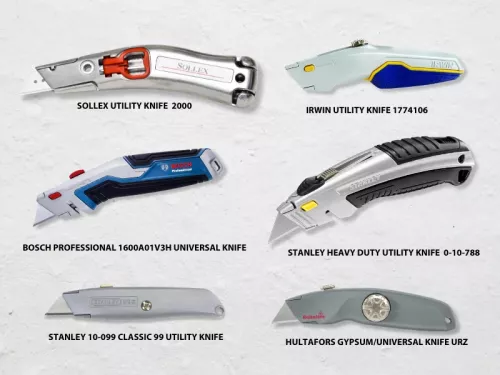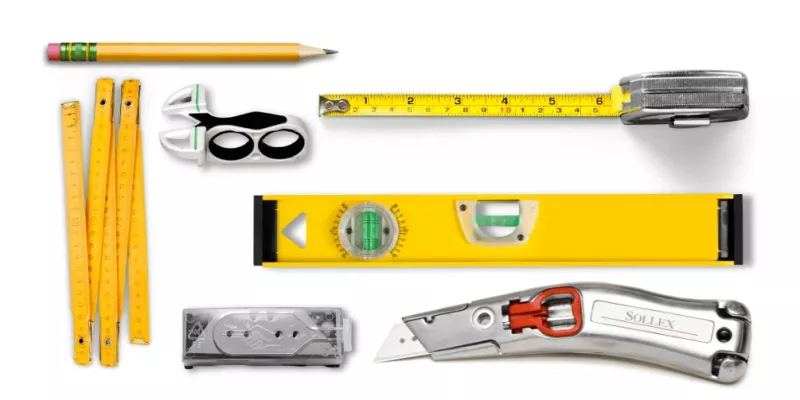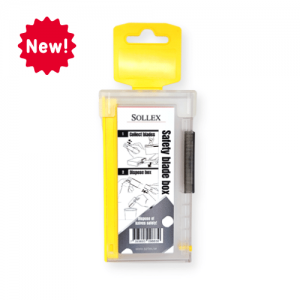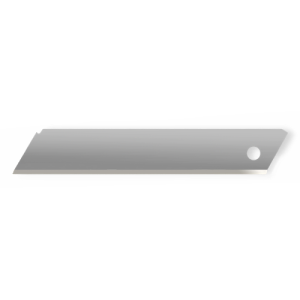How to Cut Drywall with a Utility Knife
Here are some useful tips for working with drywall
Drywall is one of the most used building materials, but it is also quite brittle. It is used to cover ceilings and walls, as well as to create other ornamental components in house interiors. However, improper cutting results in excessive drywall use and extra expenditures. But don't worry, cutting drywall correctly with your own hands isn't difficult. It is just to follow directions. Let's start with the drywall structure and the tools that are best for cutting drywall.
Content:
About Drywall, Gypsum Board Material
 Get familiar with how drywall is structured to understand the principles of cutting. The inner layer of the sheet is gypsum with fillers added. The two outer layers are formed by cardboard, which gives the material its strength. Gypsum is brittle, so without cardboard, the sheets will break and crumble at the slightest mechanical impact.
Get familiar with how drywall is structured to understand the principles of cutting. The inner layer of the sheet is gypsum with fillers added. The two outer layers are formed by cardboard, which gives the material its strength. Gypsum is brittle, so without cardboard, the sheets will break and crumble at the slightest mechanical impact.
There are three types of gypsum plasterboard available: normal, water- and fire-resistant. In damp places, the water-resistant variant is utilized to create ornamental structures and to cover walls and ceilings. Buildings that are intended to be situated close to a stove, fireplace, or other heat sources must use fireproof gypsum board. For all other circumstances, regular.
What Knife is Suitable for Cutting Drywall
A utility knife or dolphin knife with trapezoid utility blade is designed specifically for working with drywall. It has an ergonomic handle for optimal transfer of force from your hand to the material. Trapezoid blades have good rigidity, and don't bend under pressure. This type of blade is designed for cutting drywall.

How to Cut Gypsum Board with a Utility Knife
Gypsum plasterboard is very flexible, so it must be placed on a flat and stable surface. A tape measure and a pencil, ruler, etc. are used for marking the cutting line.

Take measurements and apply the markings. Putty will not hide marks left by a marker or pen, so use a plain pencil instead. Draw the lines on both sides.
Make sure the knife's blade is shorter than the sheet's thickness by adjusting its length. After that, align the blade with the ruler on the line, cutting the full length of the guide. To ensure that the cardboard is only cut on the outside, apply minimal pressure to the blade.
Next, the drywall sheet has to be shifted nearer to the base's edge and lightly tapped. The gypsum layer along the cut line will become less cohesive as a result of tapping. Subsequently, hold the section of the sheet that has been cut off and bend it hard downward so that the plaster layer breaks precisely along the line.

It remains to take a knife and bend the sheet along the cut line before dividing it into two sections. It won't be difficult because the halves will only be kept together by one sheet of cardboard.
After dividing the sheet, smooth out the edges of the cuts using a special or ordinary planer to avoid sloppy nicks that will cause problems when docking the sheets on the wall. Chamfering should be done with gentle pressure, or the material may begin to collapse.
Watch this video where we demonstrate how to cut drywall in a straight line with the Sollex 2000 Universal Utility Dolphin Knife
Tips for cutting drywall that you will definitely find useful
- Make sure you use a robust knife with a sharp blade.
- The cutting procedure requires working on a dry surface; if the drywall has absorbed moisture, you will be unable to cut it accurately.
- Cutting is often done on the rear side (the one that will be put on the wall), allowing you to conceal any flaws that arise during the process.
- If you need to cover a wide area with drywall, use 3.6 meters rather than the customary 2.5. This manner, you will save both time and material.
- Create a detailed plan for using drywall boards so you know exactly where the material needs to be cut.
- If you're going to install drywall on both the ceiling and the walls, start with the ceiling.
- It is advisable to connect as many whole boards as feasible. This speeds up the cladding process while also lowering material costs.
- If you need to cut the gypsum board in a complicated pattern, then cut the length and then the breadth.
- Larger sheets are better cut with the wall at a slight angle. And small sheets can be cut on the floor.
FAQs
Is a Utility Knife and a Drywall Knife the Same Thing?
Yes, we would say that utility knives are almost always suitable for cutting drywall, especially those with trapezoidal blades. Trapezoidal blades are thicker and more durable and usually have double grinded blades, which makes them also very sharp. You can find a large selection of trapezoidal blades in our "Utility Blades" category.
Can I Use a Snap-off Knife to Cut Drywall?
We would advise avoiding the use of knives with snap-off blades for cutting drywall and tough materials, as with a lot of pressure on the blade, a piece of blade can break off and injure the user. But if you only have a snap-off knife, then use it for cutting hard materials along with a blade without segments. For example, we have the 180LUS snap-off blade without segments in stock.
How to Cut Drywall without Dust?
To cut drywall in a straight line with a minimum of dust, you need to make a cut on one side of the sheet with enough force to cut through the paper and the gypsum core about 3 mm deep. It is necessary to cut this straight line across the entire sheet or piece of drywall, from edge to edge. Then you need to turn the sheet over and press with your hand exactly behind the line of the cut. Under pressure, the sheet of drywall will break exactly along the cut line. To finish the procedure and separate one piece from another, you simply need to cut through the paper on the other side of the drywall.
A standard sheet of drywall is 12.5 mm thick. This method is suitable if you need to cut off pieces of drywall up to 3.5 centimeters wide. If you need to cut thinner strips/pieces, you will have to make deeper cuts with a knife.
How to Cut Drywall if You Need to Cut Shapes
Cutting circles, semicircles, arcs, ovals, and all kinds of curved shapes is handy with an electric jigsaw.










![Sollex awarded with AAA rating by Bisnode [2025] Sollex has been awarded AAA credit rating 2025 by Bisnode - Blog](https://cdn.starwebserver.se/shops/sollex-se/files/cache/johan-falk-sollex-vd-ceo-aaa-business-awards-2025-1_grande.webp?_=1763540059)
